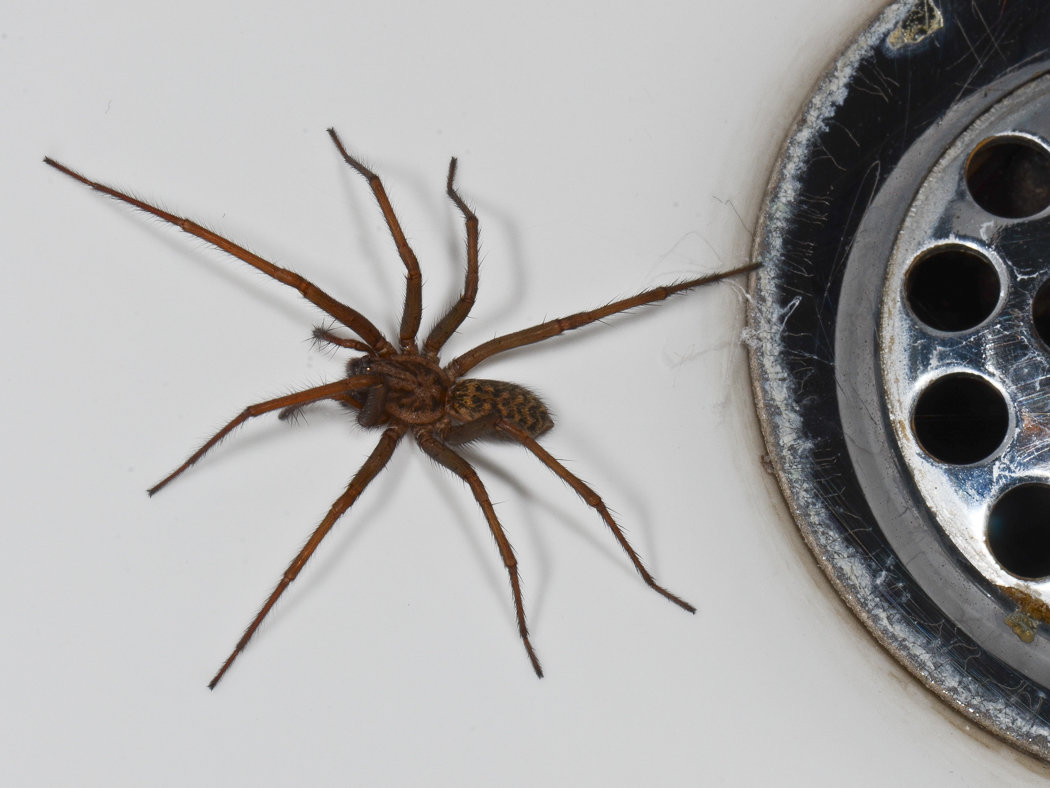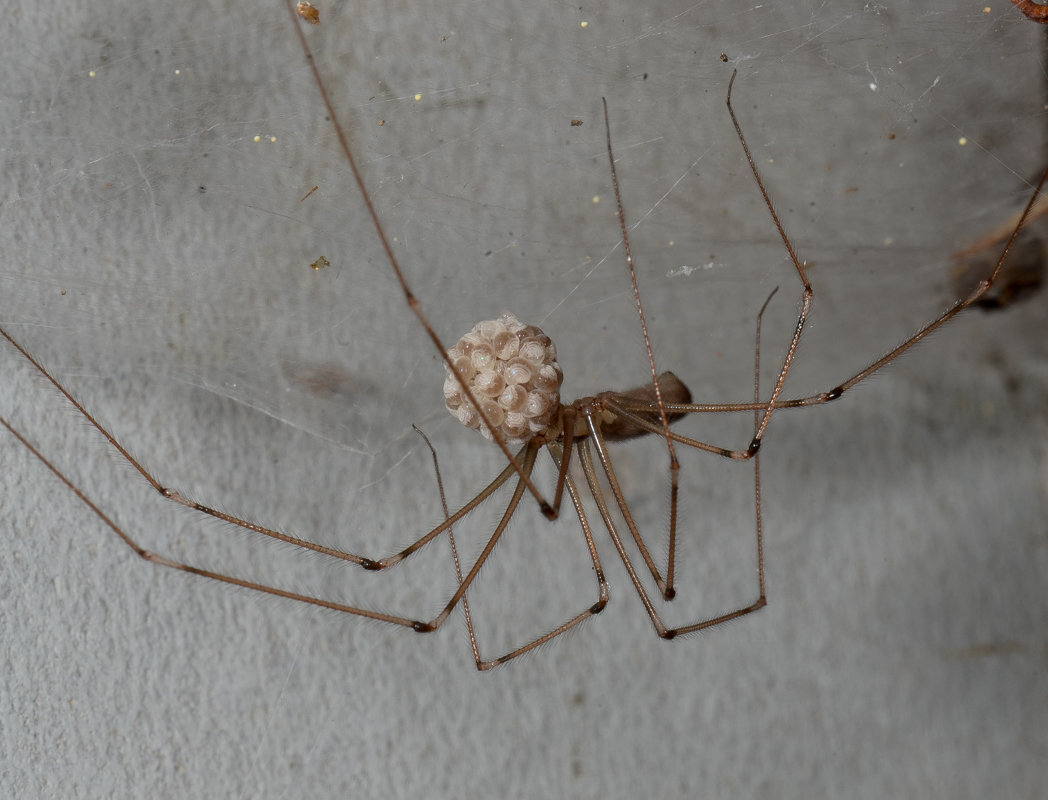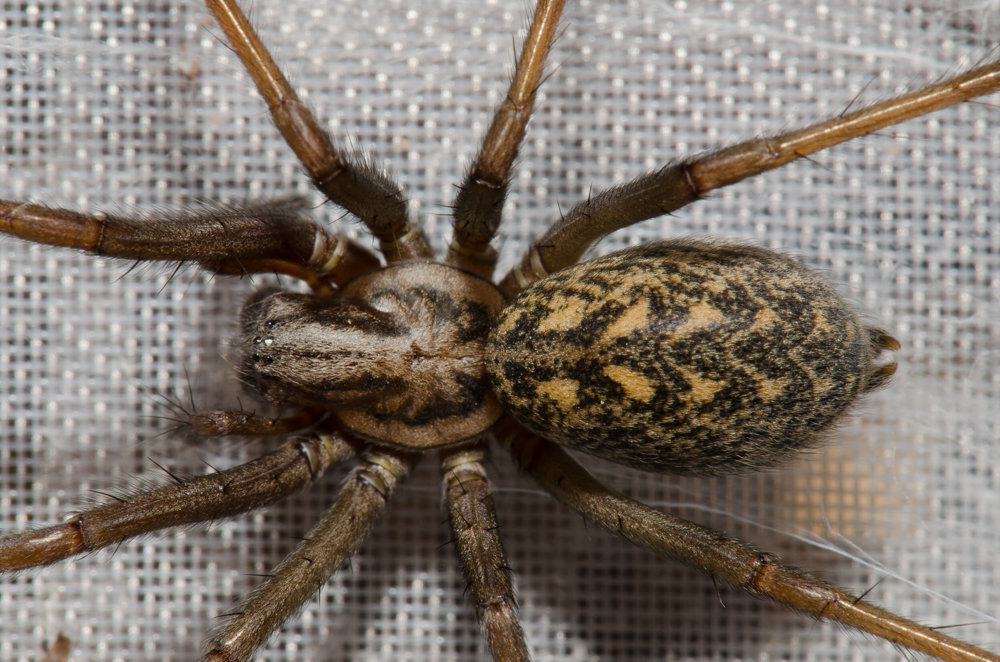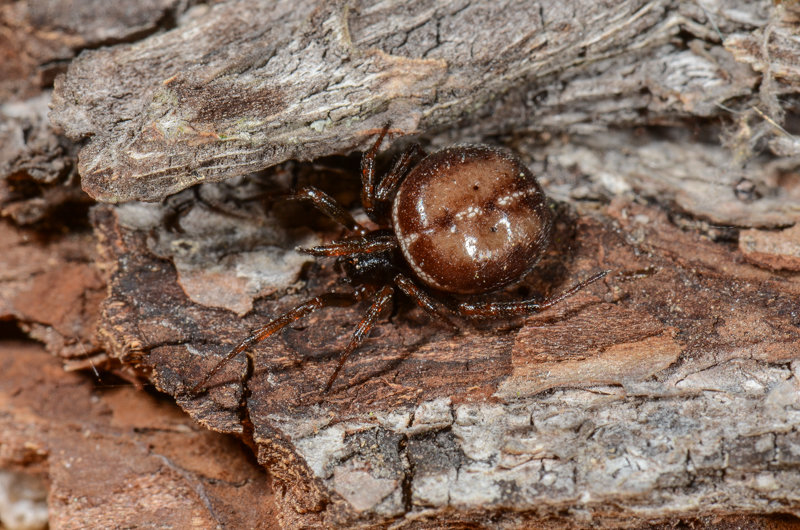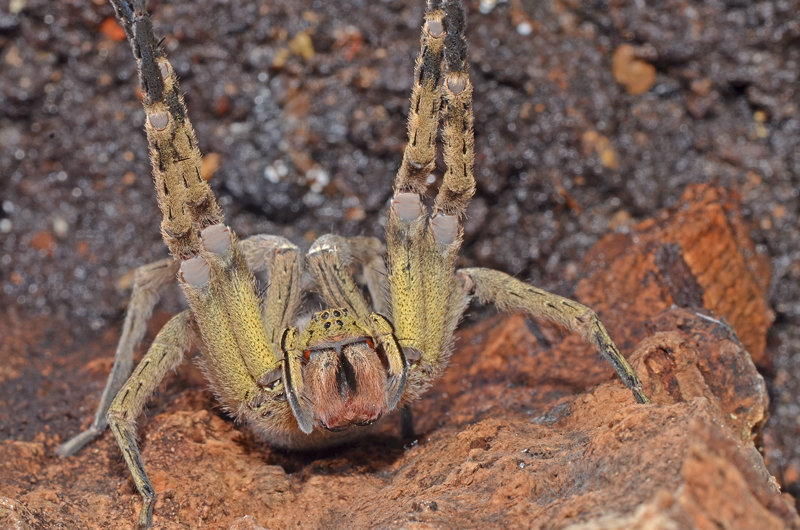Spiders Indoors
Few spider species utilize our living quarters as habitats. Among the exceptions are such species unable to survive in our climates with a winter season as well as a number of species accidentally entering our homes during summer. Most spiders are not adapted to the climate and prey scarcity in houses and die as soon as heaters are turned on and the air becomes too dry. Cellars and sheds on the other hand can provide suitable habitats for some cave spider species.
Useful resources for the determination of found or photographed spiders can be found in the associated pages of the Spinnen-Forum and the Spinnen-Wiki as well as on our page Spinnen Bestimmen.
The Longbodied Cellar Spider (Pholcus phalangioides) is probably the most often encountered spider species in houses. Due to its compact gray body and the long legs it is often confused with harvestmen. At a closer look it can be recognized as a true spider, its body consisting of two parts: the frontal prosoma and the abdomen. It also weaves a silk web, which harvestmen are not capable of.
When disturbed the cellar spider starts a rhythmic bobbing motion, making it hardly discernable in between all this back and forth. This behavior can be understood as an evolutionary adaptation to spider-hunting vertebrates. The spider catches any prey entering its web, such as insects and other spiders, by throwing silken threads onto them from a safe distances. This way it can even overpower comparably large spiders like the giant house spider. With its small poison fangs (chelicers) the cellar spider can only make small punctures in the prey‘s integument, therefore one prey insect can take several days to imbibe. More on this species …
In comparison, spiders found in cellars and sheds, but occasionally in bathtubs and sinks are often the larger, brown and hairy spiders known as house spiders. These funnel-web spiders belong to a number of genera (e.g. Eratigena, Tegenaria) weaving an often triangular web in corners and other narrow places and crevices.
It is the narrowest spot, right in the very corner itself, where the spider sits in its retreat, which leads backwards underneath the web sheet to an “emergency exit“. Experienced spider collectors knwo how to utilize this emergency exit in order to catch a large and fast house spider! In most cases the spider sits in its retreat and can suddenly leap onto the silk sheet, e.g. when a woodlouse accidentally enters the web and gets entangled in the many stumbling threads woven onto it. The spider itself literally climbs over the threads by quickly lifting its long legs vertically over and above the threads, putting its legs down directly vertically on the other side, therefore preventing collisions with the threads and being slowed down.
Often disliked, the European house spiders are entirely harmless; they can hardly be provoked into biting. It is therefore quite easy to catch an encountered house spider in a handkerchief and take it outside. Individuals found in bathtubs or sinks are most often males searching for the webs of females and falling into the basins, from which they can not escape due to the basin‘s smooth enamel surface. More on this species …
Another species found in sheds is Steatoda bipunctata, the translation of its German name Fettspinne would be Fat Spider, due to its fat-like shiny appearance. The English name is Rabbit Hutch Spider, as it can also be found making its web in old unused rabbit holes. Its thick „skin“ (cuticula) prevents water loss, enabling the spider to dwell in dry habitats. This species is quite inconspicious, characteristics are its compact body shape, size and fatty shining. More on this Spider of the Year 2018 …
Another species, which is abundant in houses but most often overlooked, is one of the most interesting species at all: the Spitting Spider (Scytodes thoracica). It is comparably small, nocturnal and moves very slowly on its patrols for prey. Occasionally one can happen upon a specimen, e.g. when lifting an old flower pot or moving something on a kitchen shelf. But even then, one has to be quite observant in order to see and recognize this spider.
Spitting spiders are unique amongst the spiders in their means of catching prey. After having touched and thus recognized a prey insect with its front legs, it is capable of ejecting a gluey thread from their poison fangs and criss-crossing it over the insect, therefore immobilizing and fixing it to the ground. Only then approaches the spider the insect and aplies its paralyzing poison bite. It can be quite entertaining to keep a spitting spider in a small glass jar for a while, feed small flies to it and watch the spider hunt. More on this species …
In our yards, sunlit walls or close-to-nature gardens also provide for suitable habitats for certain species. The very handsome yet still often overlooked Zebra Spider (Salticus scenicus) and other jumping spiders (e.g. Sitticus pubescens) live on sunny walls, where they hunt flies and other small insects. During prey capture they utilize their amongst spiders and insects extraordinarily well developed eyes. This is recognizable to the observer, who can see the spider cat-like stalking a prey insect. Sometimes such a spider happens to enter a living quarter with unsuitable conditions. It is recommended to put the spider outside onto the window sill and then to close the window for a while. Mehr Infos zur Art …
Of course there are other spider species, which can be found in houses sometimes and gardens harbor a variety of more or less natural spider communities. There the first task is to make a reliable determination of the found specimen, enabeling the finder to research its natural history. Every once in a while, species from warmer climates find their way to us. In green houses, fruit markets etc. one can sometimes encounter exotic spider species. A separate page is dedicated to these banana spiders ...
The spiders characterized above and most of the other spider species our common and unproblematic „co-habitants“ in houses and apartments. It is therefore not recommended to rid living quarters of spiders or even kill them. In cases where it is considered necessary to, for example remove a cellar spider from the ceiling above the kitchen table, a spider can in most cases easily be caught by putting a trink glass over it and slowl sliding a piece of paper or thin cardboard under the glass. The spider in the glass under the lid can then quickly the transported outside, where it can make a new web. Another method is placing a paper handkerchief over the spider and tenderly making a loose fist over the handkerchief with the spider inside. One can even purchase special „insect-catching-shovels“ with a long handle. However, they often have quite crude mechanics and injure or kill spiders and insects rather than catching them. Lastly, the solution by means of a vaccum cleaner might be convenient for us but it is unneccessary for the task and lethal to the animal.



